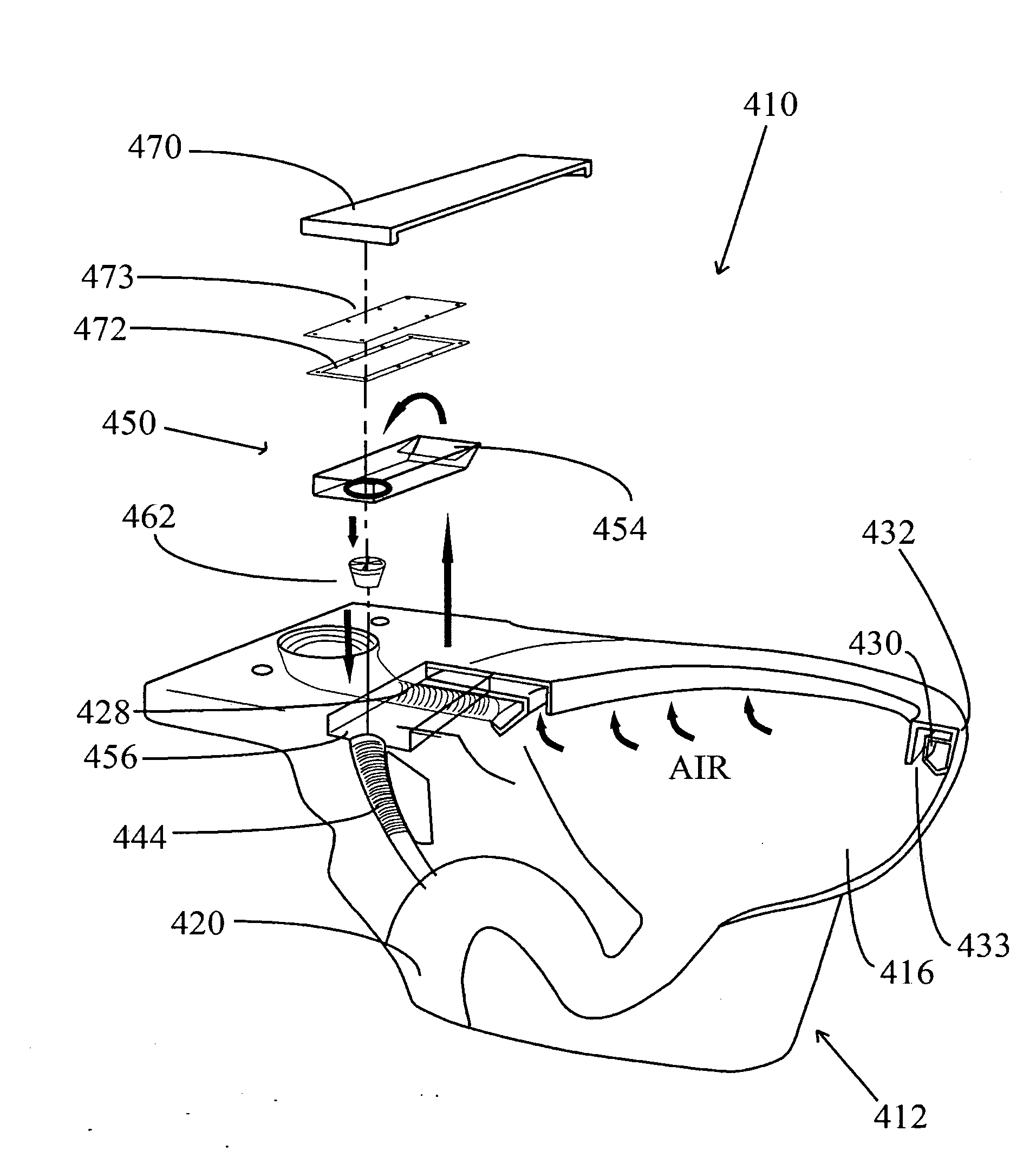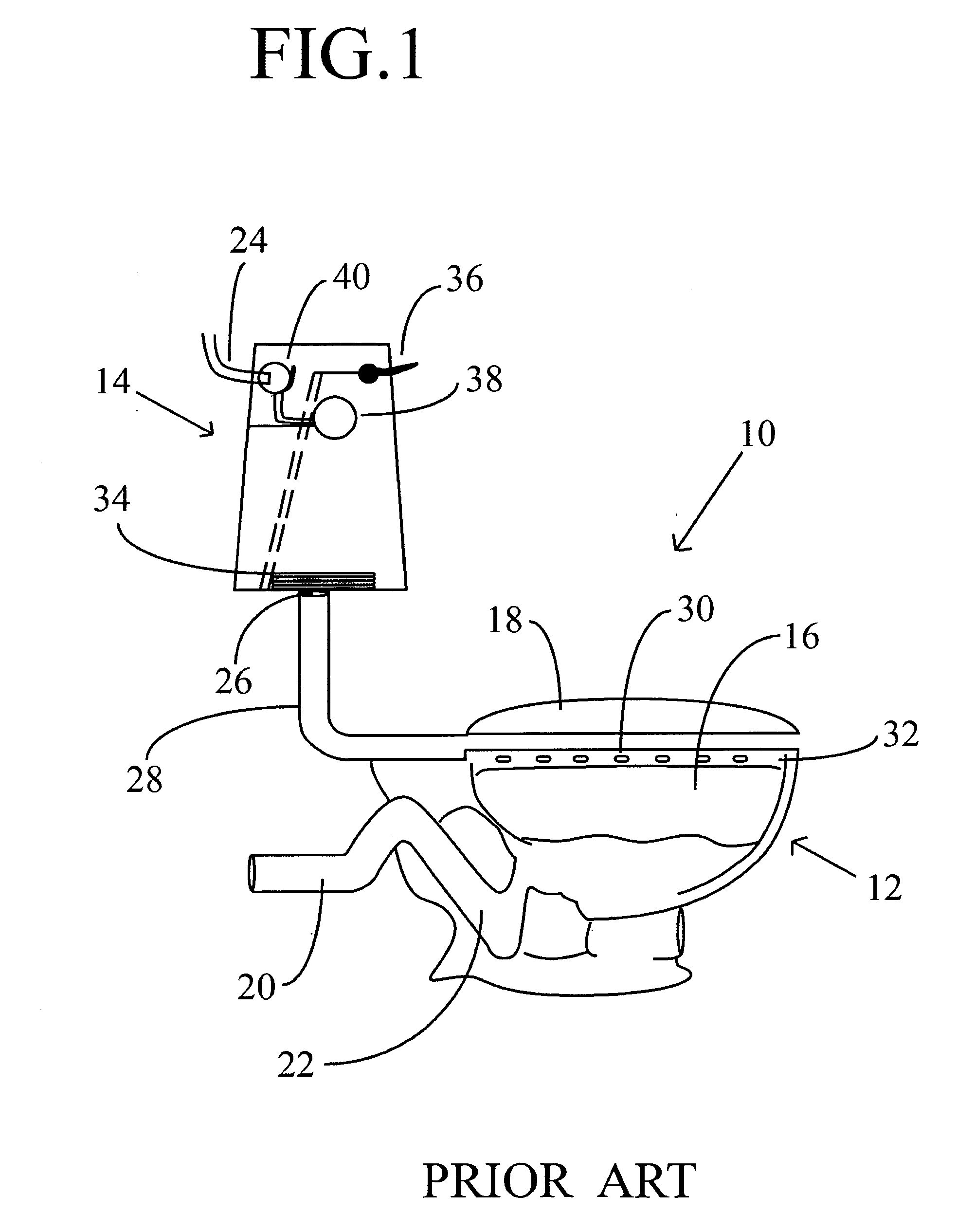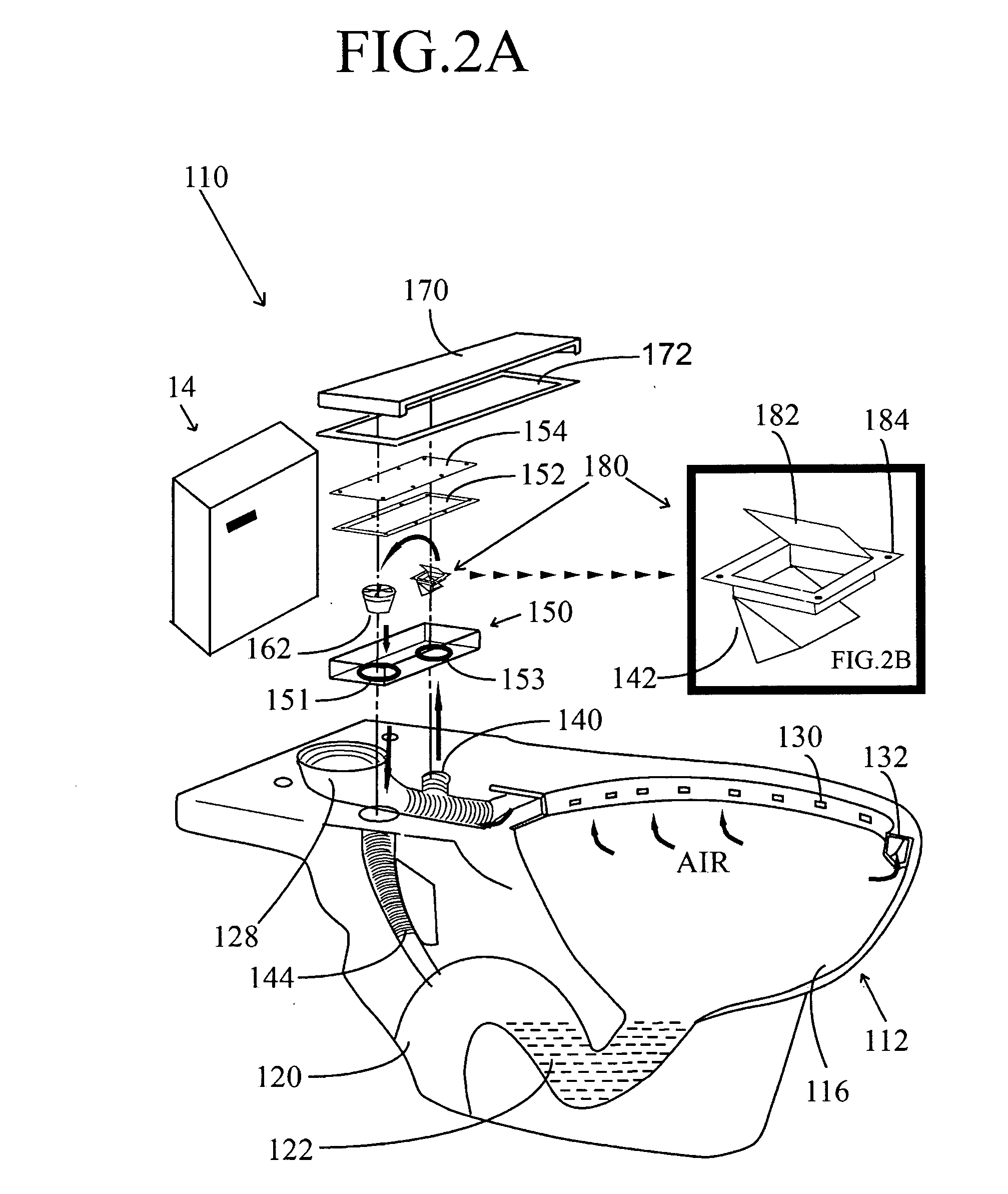Odor-free toilet
a technology of odor-free toilets and toilets, applied in water installations, hollow objects, constructions, etc., can solve the problems of releasing foul smells into the air within the generally small confines of toilets, human excrement smells unpleasant, transmission of diseases, etc., and achieves simple valves and simple electrical air fans. , the effect of being reliabl
- Summary
- Abstract
- Description
- Claims
- Application Information
AI Technical Summary
Benefits of technology
Problems solved by technology
Method used
Image
Examples
Embodiment Construction
[0076]With reference to FIG. 1 a cross-section through a standard, prior art water closet or toilet 10 is shown. The toilet 10 consists of a pedestal unit 12 and a cistern 14. The pedestal unit 12 has a bowl 16 above which a seat 18 may be positioned. The bowl 16 is connected to a sewage pipe 20 via a U shaped trap 22. The cistern 14 or tank, has a water inlet 24 thereinto, that is connected to a water main, a water outlet 26 coupled to the toilet bowl 16 via a flush conduit 28 which typically splits into a plurality of nozzles 30 under an internal rim 32 around the mouth of the toilet bowl 16. A flapper valve 34 coupled to an actuator handle 36 covers the outlet 26 of the cistern 14.
[0077]The toilet bowl 16 is used as a receptacle for defecation and urination thereinto. After use, depression of the actuator handle 36 raises the flapper valve 34 and empties water from the cistern 14 down the flush conduit 28 into the toilet bowl 16. The incoming rush of water swishes the contents of...
PUM
| Property | Measurement | Unit |
|---|---|---|
| suction | aaaaa | aaaaa |
| pressure | aaaaa | aaaaa |
| flow rate | aaaaa | aaaaa |
Abstract
Description
Claims
Application Information
 Login to View More
Login to View More - R&D
- Intellectual Property
- Life Sciences
- Materials
- Tech Scout
- Unparalleled Data Quality
- Higher Quality Content
- 60% Fewer Hallucinations
Browse by: Latest US Patents, China's latest patents, Technical Efficacy Thesaurus, Application Domain, Technology Topic, Popular Technical Reports.
© 2025 PatSnap. All rights reserved.Legal|Privacy policy|Modern Slavery Act Transparency Statement|Sitemap|About US| Contact US: help@patsnap.com



